Lists and tuples are a class of built-in data structures in Python that can store one or more object values.
Data structures allow you to organize and manage your data efficiently while enhancing its accessibility. Having the right data structures in place help you modify your stored data pretty easily, which is why lists and tuples are so useful. Through them, you are able to organize and store data sequentially so you can perform operations on it later on.
If you are a beginner learning foundational Python concepts, lists and tuples can be a little confusing since they look almost similar. Plus, both store multiple items in a single variable.
But while both lists and tuples carry similarities, there are some fundamental differences between the two data types. Let’s take a look at what those are.
Difference Between Lists and Tuples in Python
Syntax Differences
The most basic difference between lists and tuples in Python is the syntax. Values in lists are enclosed in square brackets [] whereas in tuples, they are surrounded by parenthesis ().
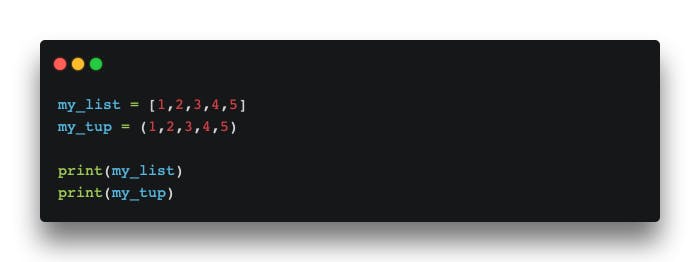 Output:
Output:

Mutable vs Immutable
Lists are mutable in nature whereas tuples are immutable. We also say that lists are dynamic while tuples have static characteristics.
What this simply means is that you can modify lists or the values in a list. In contrast to that, tuples cannot be modified.
The dynamic vs static aspect of lists and tuples also has time implications as tuples are faster than lists because of their static nature. Hence, iterations are performed comparatively faster when it comes to tuples.
List Mutability Test
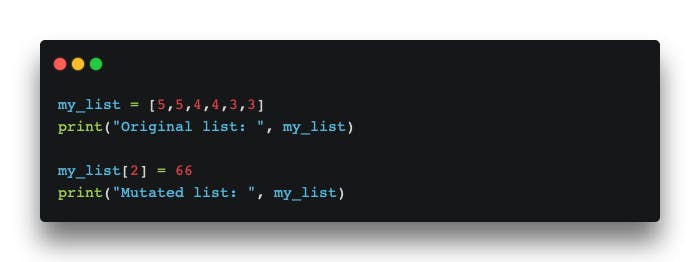 Output:
Output:

Tuple Immutability Test
 Output:
Output:

Memory Allocation
Tuples are stored in a single memory block since they are fixed in size i.e., immutable. As a result of this, they don’t require extra space for new objects. They do not extend after the initial declaration in the memory.
Once you create a tuple, you cannot update it unless a new tuple is added to the previous one. This would result in a new tuple being created with an update in the memory address of the resulting tuple.
Contrastingly, lists are allocated in two blocks since they are a mutable dynamic array. The first block is for fixed size and the second one is for variances in data size.
When a you add to or pop from a list, the list address remains the same as long as we don’t assign it to a new variable. This means that we can update the list or extend it further at the same address.
This attribute makes lists a better choice for performing different operations, such as deletion, insertion, and more. Tuples are better for accessing elements.
Their fixed nature lends to the faster iterations of tuples as well. However, it is important to note that this aspect of tuples vs lists is negligible until we are dealing with a large number of elements.
Size Comparison
Lists operations have a larger size than that of tuples. In the code below, both the list and the tuple have the same items yet the size of the list is bigger than that of the tuple in the output.
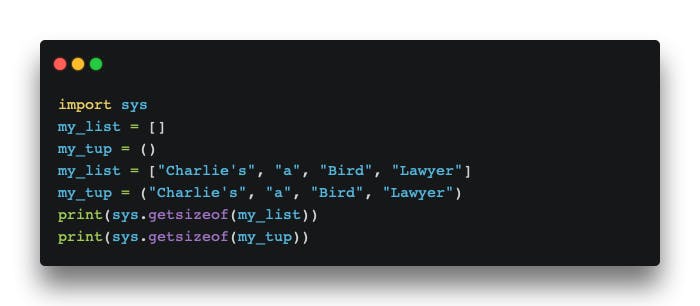 Output:
Output:

Use Cases
You may feel that due to the dynamic nature of lists, they are always a convenient replacement for tuples. However, that is not true and, in fact, tuples can make for helpful data structures in a few cases.
Here are a few ways tuples can be greatly helpful:
- Due to their static nature, tuples make the code safe from any accidental modifications. This can be extremely helpful in large codebases where such errors are hard to spot and eradicate. Hence, if there is data in a program which is not supposed to be changed, tuples are a great choice to put that data in.
- Using tuples gives the programmer and the interpreter an idea that the data is not supposed to be modified or changed in any way.
- Tuples are more space efficient.
- Tuples are great for storing fixed-length sequences of differing types of data as opposed to lists that are better for data of the same type.
- A tuple can be used as dictionary keys if it contains immutable values like numbers, strings, or another tuple.
- You can store tuples inside a list which makes reading the data a lot simpler than if you were to use lists inside a list. For instance, below, the first code snippet is a lot easier to read than the second one.


Difference in Operations
Lists have more built-in operations as compared to tuples. To check the built-in functions of lists and tuples, you can use dir(object) command to get all the associated operations for both.
Available Operations for Lists

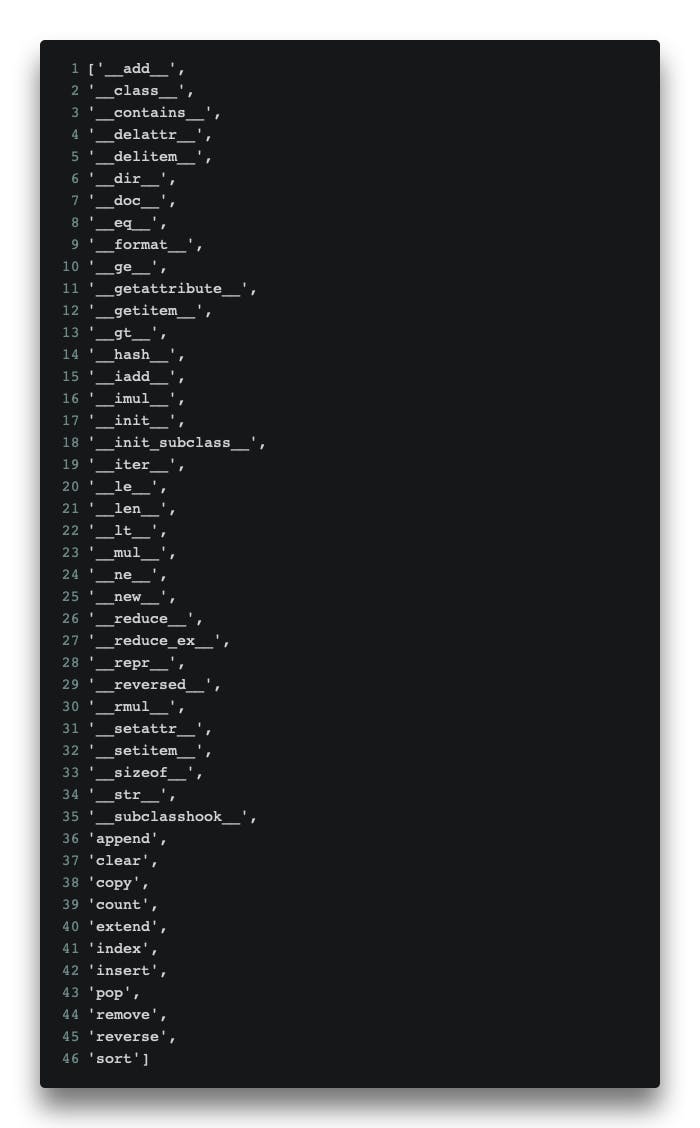
Available Operations for Tuples

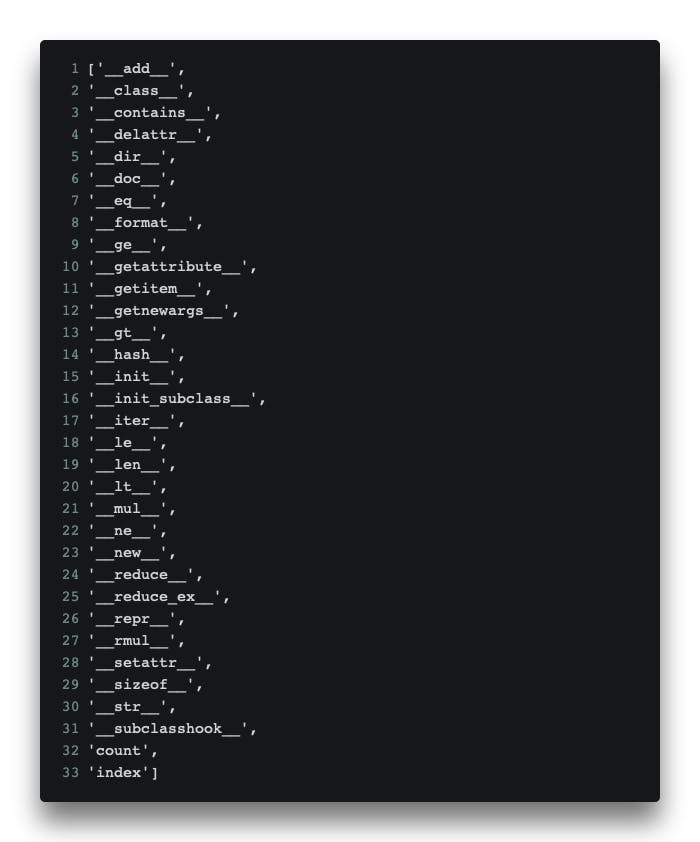
Key Takeaways
- Lists and tuples differ in basic syntax. Lists are enclosed in square brackets [] whereas syntax of tuples is shown by parentheses ().
- Lists are dynamic and mutable whereas tuples are static and immutable.
- Tuples have a fixed size and lists have variable length.
- Lists come with a wider range of functionalities than the tuple.

